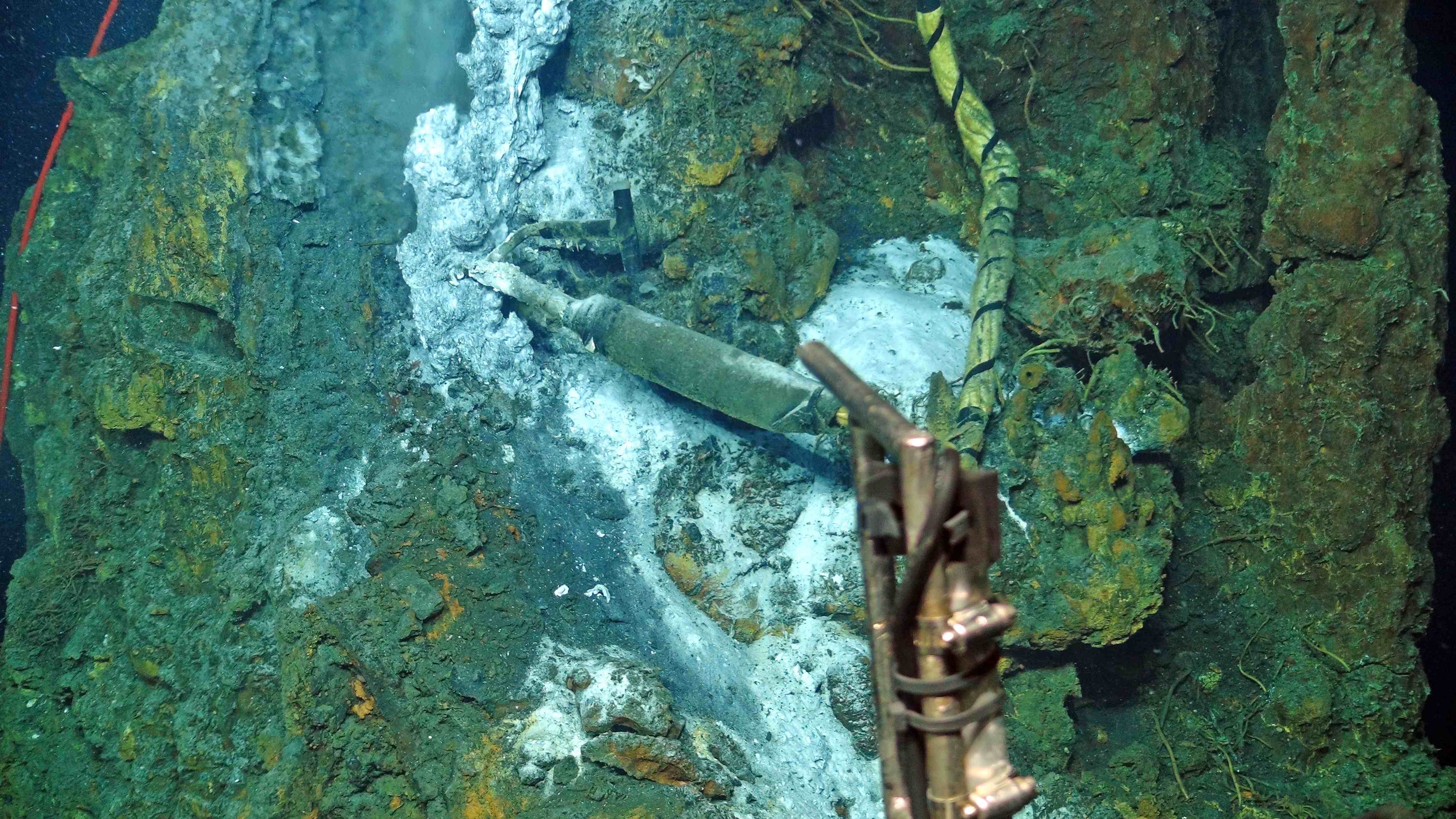Known as the “Res Probe,” this novel seafloor instrument is designed to go inside the “throats” of high-temperature (>400°C) black smoker chimneys to measure the resistivity and temperature of the hydrothermal vent fluids. Resistivity is an analogue for chlorinity, measuring the “saltiness” of the vent fluids. Some structures at Axial Seamount emit boiling fluids, as reflected by their high temperature and low chlorinity. They also have very low pH (~1.0, lower than battery acid), which makes long-term measurements very challenging. The white wrapping around the cable, seen in the image above, prevents overheating of the cable from the surrounding hydrothermal fluids, should a change in venting sites occur over the duration of the deployment.
The Res Probe was developed by Dr. Marv Lilley at the University of Washington. The cabled version of the Res Probe has been installed on Axial Seamount since 2014 at the Escargot sulfide structure (so named because the morphology of the chimney is reminiscent of a snail) as part of the International District Hydrothermal Field instrumentation. In 2014, UW student Gina Hanson produced a video about this instrument (“Measuring Boiling Fluids On the Seafloor”) that can be accessed here.
A similar instrument has been installed at a vent (Grotto) in the Main Endeavour hydrothermal field for over a year, as part of the Ocean Networks Canada cabled array.

